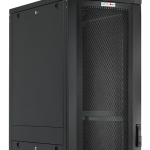20 Jan 11 reasons why the future belongs to fiber optic
11 reasons why the future belongs to fiber optic – “The future belongs to fiber optics!” – a great promise. Some of the arguments in favor of FTTH are obvious, others only emerge at second glance. In this article, the first 11 reasons ‘for fiber‘.

Copper is (almost) at the end – why the future belongs to fiber optic
The copper era for private data communication started with the acoustic coupler and around 300 bit / s in the mid-80s. Since then, copper technology has made ever larger bandwidths possible. With the modem , development ended at 56,000 bit / s . Thanks to channel bundling, ISDN allowed 128,000 bit / s and that was already purely digital. Later DSL and VDSL with bandwidths of up to 50 Mbit / s came onto the market. Every increase in bandwidth required bigger and bigger pull-ups to get even more out of the copper wires that were originally designed for pure telephony.
The current “ supervectoring ” level allows up to 300 Mbit / s . However, the cable routes have to become shorter and shorter. The distributors are moving closer and closer to the customers, so to speak. Fiber Optic begins where copper ends and the cable length is not a decisive factor, at least in urban areas, and is negligible. With FTTH , 100 Mbit/s symmetrically (each in upload and download) is the standard, 1,000 Mbit/s is technically possible without any problems – a pure tariff issue.why the future belongs to fiber optic, because;
Fiber optic is the basis of the Internet – why the future belongs to fiber optic
For many years, the backbone of the Internet has consisted of fiber optic connections. Otherwise, the global amounts of data would no longer be manageable for a long time. One of the most modern fiber optic cable is the “ Transatlantic Telephone Cable 14 ”, TAT-14 for short. It connects the USA with Europe and has a bandwidth of 1,280 GBit/s, i.e. roughly 1,280,000 MBit/s . In the meantime, the fiber optic with FTTH has arrived at the end customer and allows speeds of 100 Mbit/s, 500 Mbit/s or 1,000 Mbit/s without any technical gimmicks.
why the future belongs to fiber optic, because
Fiber optics is the sustainable infrastructure for the next 50 years – why the future belongs to fiber optic
FTTH requires a completely new infrastructure and thus initially a significantly higher amount of work and investment, especially in civil engineering . Empty conduits have to be buried and every household needs a new connection. First of all, money has to be taken into account – but then the problem of bandwidth will be solved for decades ! Even the next performance levels (e.g. to 10 GBit/s = 10,000 MBit/s) are implemented directly in the distributors . New components are then necessary there. The actual fiber remains in the ground. The customer’s in-house cabling represents a possible bottleneck . There is currently being converted from fiber optics to Gigabit copper Ethernet. Optical fiber for in-house cabling is currently still the exception.
why the future belongs to fiber optic, because
Home office as part of the solution to traffic problems
A total of 455,000 km of traffic jams were in North Rhine-Westphalia in 2017 alone. Traffic jams cause problems for commuters and the environment. And even if the funds are made available immediately, transport planning remains a very long-term issue . On the other hand, broadband expansion can be implemented almost at short notice. In the medium term, there is no getting around fiber optics. The applications are becoming more and more data hungry , so that a corresponding bandwidth must also be available in the home office. What about the political will? Why not introduce a mandatory home office regulation or at least one home office regulation per company. Why not introduce a legal entitlement? What speaks against it? The Netherlands have already started
why the future belongs to fiber optic, because
Development of bandwidth – FTTH is the logical development

The well-known “Moore’s law” simply states that the performance of processors doubles every 18 months . Gordon Moore set up this theory in 1965 and has largely been proven right to this day. With regard to the bandwidth of Internet connections, there is the much less well-known “ Nielsen’s law ”. Jakob Nielsen put forward a comparable theory about the development of bandwidth. This bandwidth growth has been going on for around 40 years. Fiber optic in the form of FTTH is only the next logical step in this development. 0.0003 Mbit/s is enough for me
Video conferencing systems replace business trips
Professional video conferencing systems have become more and more popular in recent years. Personal exchange is essential in larger projects . But nowadays you don’t have to travel around the world to do this. The larger companies in particular have recognized that there is great potential for savings in travel costs . The environmental aspect and the associated reduction in the CO2 footprint are also important arguments for such video conference systems. The basis for this is a powerful internet connection such as B. FTTH.
Streaming services need bandwidth
95% of all video libraries in Germany have now been closed and replaced by Netflix, Amazon Prime and Maxdome . Not surprising from the customer’s point of view, the streaming services actually only have advantages: No journeys for collection and return, comfort and time savings at the same time. At the same time a huge selection of films and a convenient search function. There is a trailer for practically every film, and the customer can comfortably decide from the sofa which film it should be. And also spontaneously, Saturday evening at 11 p.m., in sweatpants. Even if some nostalgia is lost, the future belongs to streaming services. In the future in resolutions of 4K or 8K and virtual trips using VR optices are already foreseeable today. All of this will only work with sufficient bandwidth.
Fiber Optic is environmentally friendly
The performance of the optical fiber is enormous – it is all the more astonishing at second glance that the technology behind it is much simpler , especially in comparison to copper technology. As described under point 1, the technical effort required to increase the data rate on copper has increased. For vectoring , the distribution boxes on the street must now also be equipped with active technology. This requires the components to be cooled . On average, each distributor consumes 500 to 1,000 watts – and the trend is rising. Fiber Optic, on the other hand, has significantly fewer active components, which significantly reduces power consumption.
No more “up to” – full bandwidth for the customer
The achievable bandwidth with copper depends, among other things, on the length of the line to the distributor and its utilization. Therefore, as a rule, no bandwidth is guaranteed, but a maximum value that is not always achievable in practice is given. In the case of mobile communications , it depends on the utilization of the individual radio cells .
Here all users share the capacity and performance of the respective radio mast. For example, if many customers use streaming services at the same time, the transmission rate drops drastically. The promised values can often only be achieved theoretically and under ideal conditions with this “ shared medium ” . Fiber optic in the form of FTTH ends this ” up to ” age. One each client gets its own fiber optic into the house and the reserved bandwidth is contractually agreed. This is also shown in the product information sheets prescribed by law.Living in the country – with only 1,000 Mbit/s
In the past, real estate agents had the motto “ location, location and again location ”. The residential area and surroundings were the decisive factor and ultimately the decisive sales argument. In the future, however, it will be “ bandwidth, bandwidth and more bandwidth ”.
This has now become a knockout criterion for rental and purchase properties, especially in rural regions. For many, the home office is an important part of the modern working world. Such properties are de facto ruled out, especially for potential tenants or buyers from the city who are already used to an adequate bandwidth . The internet has become part of life – and that also applies to the countryside. Without a high-performance internet connection as with FTTH, real estate will be very difficult to market in the future .Fiber Optic is (meanwhile) politically wanted
In the last few years, the federal government’s target has been “ 50 Mbit / s for everyone ”. The fastest and most cost-effective way to achieve this goal was to technically upgrade the existing copper infrastructure. But even when this goal was defined, it was considered less than ambitious. Critics had always criticized this and pointed to the continuous and rapidly increasing demand for bandwidth on the Internet – a development that had been evident for many years . The previous funding programs also supported the trend to give preference to copper.
Finally, who often simply costs the end rash given. But this calculation does not work out in the long term . In order to continue to cover bandwidth requirements in the future, there is no getting around fiber optics . Even supposed alternatives such as mobile communications and its next generation “5G” require a high-performance fiber optic network as the infrastructure basis.
As of today, at the end of February 2018, we can only quote the currently planned coalition agreement of a possible federal government at this point. There it says: “We want the network infrastructure change to fiber optics. Our goal is: fiber optics in every region and every community, as close as possible to the house. ”. There are comparable statements in the individual federal states, such as B. in NRW: “We pursue a“ fiber-first ”approach with all public funding measures and corresponding tenders . It remains to be seen how all of this will be put into practice in the years to come . An important factor to achieve the goals is the education of the citizens.Continues…
- Many are not at all aware of the need for broadband expansion – and this applies both to private households and even more so to industry. Often the citizens can also see serious technical differences such as B. not differentiate between vectoring and FTTH and therefore not assess. Education plays a particularly important role in the private sector FTTH expansion . Voluntarily committed citizens’ initiatives are a key to success here , in order to convince fellow citizens of the sense of the fiber optic expansion. The 10-part article series “ Fiber Optic for you! ”Serves here as a practical guide to lead such projects to success – and this without public funding!
Advancements in Fiber Optic Technology: Improving Bandwidth and Transmission Rates
Fiber optic technology has revolutionized the way we communicate, providing faster and more reliable data transmission over long distances. The use of fiber optic cables has become increasingly popula...
03 March, 2024 Uncategorized No comment 0 Likes5 Fan Facts About the Fiber Optic Cables
Fiber optic cables are a type of cable that use glass or plastic fibers to transmit data. Here are some interesting facts about fiber optic cables: Speed: Fiber optic cables are capable of transmittin...
01 June, 2019 Fiber Optic Cables No comment 4 LikesConstruction Products Regulation (CPR) for Cables
CPR for cables (Construction Products Regulation) for cables became a legal requirement in July 2017. CPR for fiber optic cables is having an intended use for permanent installation in buildings and c...
10 October, 2019 Fiber Optic Cables No comment 0 LikesHow Much Does Fiber Optic Cabling Installation Cost?
On average, fiber optic cable installation costs $1 to $6 per 30cm depending on the fiber count. It’s very difficult to estimate an exact price for an entire building to be wired, however an exa...
22 October, 2019 Cable Blowing Machine No comment 4 Likes19″ Rack Cabinet
What is a 19” Free Standing Rack Cabinet? 19” free standing rack cabinets provide a robust, cost-effective enclosure solution. PDU mounting or connectivity on both the front and rear of the cabinet. T...
26 December, 2019 19" rack cabinet No comment 0 Likes







Sorry, the comment form is closed at this time.